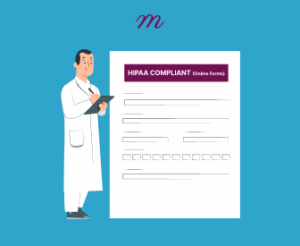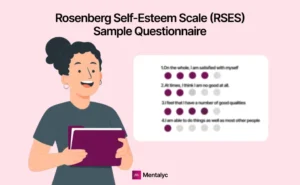The Perceived Stress Scale (PSS) is a psychological instrument to assess the degree to which individuals perceive situations in their lives as stressful. Rather than focusing on specific life events or objective stressors, the PSS measures a person’s subjective experience of stress. This makes it especially useful in therapeutic settings where a client’s emotional interpretation of events is often more relevant than the events themselves. The scale is designed to reflect how unpredictable, uncontrollable, and overloaded individuals find their lives to be—core components of stress that contribute significantly to mental health outcomes.
Understanding the Perceived Stress Scale (PSS-10) Format
The most commonly used version of the Perceived Stress Scale is the PSS-10, a 10-item self-report questionnaire that asks individuals to reflect on their thoughts and feelings over the past month. Each item is rated on a 5-point Likert scale, ranging from 0 (“Never”) to 4 (“Very Often”). The questions are designed to tap into the frequency of feelings related to stress, such as feeling nervous, overwhelmed, or out of control. Some items are positively worded and are reverse-scored to balance the scale and reduce response bias. The PSS-10 is quick to administer, taking roughly 5 minutes, and can be used in a variety of settings, including therapy, primary care, and research (Harris et al, 2023).
How to Score the Perceived Stress Scale (PSS-10)
Scoring the PSS-10 involves summing the scores for each item, with positively worded items (e.g., “In the last month, how often have you felt that things were going your way?”) being reverse-scored before adding them to the total. Specifically, items 4, 5, 7, and 8 are reverse-scored by subtracting the response from 4. The total score can range from 0 to 40, with higher scores indicating higher levels of perceived stress. The scoring process is simple and can be done manually or using automated scoring tools available online or through practice management software.
Perceived Stress Scale-10-Item Scoring Interpretation
The interpretation of PSS-10 scores is not diagnostic but provides a general sense of where a person falls on the spectrum of perceived stress. Generally, a score between 0–13 is considered low stress, 14–26 is moderate stress, and 27–40 is high stress. These ranges serve as guidelines and should always be interpreted within the context of the individual’s circumstances. For example, a score of 24 might be typical for someone going through a major life transition, while a score of 18 could be concerning in someone with limited external stressors but significant internal distress. Clinical judgment and contextual understanding are key (Sharif-Nia et al, 2024).
Perceived Stress Scale 14-Item
The original version of the Perceived Stress Scale included 14 items (PSS-14) and was also designed to assess stress over the past month. Like the PSS-10, it uses a 5-point Likert scale and includes both positively and negatively worded items. The PSS-14 offers a slightly more nuanced view of perceived stress but is less commonly used due to its longer format. Some clinicians may still prefer the PSS-14 in research or when a more detailed measure is needed, although the psychometric differences between the two versions are minor in most clinical applications.
PSS-10 vs PSS-14: Key Differences Between the Two Versions
The main difference between the PSS-10 and PSS-14 lies in the number of items and the corresponding level of detail. The PSS-14 includes four additional items that further explore the emotional and cognitive aspects of stress. However, research has shown that the PSS-10 maintains nearly the same level of reliability and validity while being quicker and easier to administer. As a result, the PSS-10 is more frequently used in clinical settings, especially when time is limited. The PSS-14 may be reserved for more comprehensive assessments or research studies where slightly greater sensitivity is desired (Maqsood et al., 2021).
Perceived Stress Scale: Reliability and Validity
The Perceived Stress Scale has demonstrated strong reliability and validity across numerous studies and populations. It also shows good construct validity, correlating with measures of anxiety, depression, and physical health symptoms. The scale has been validated in multiple languages and cultural contexts, further enhancing its utility in diverse clinical settings. Its widespread acceptance is largely due to its robust psychometric properties and ease of administration (Sharif-Nia et al, 2024).
The Perceived Stress Scale (PSS) Questionnaire Explained
The PSS questionnaire is freely available for public use and consists of straightforward, accessible questions that are easily understood by most individuals aged 12 and up. Therapists can administer it in paper format, through digital forms, or embedded in electronic health records. Clients are instructed to answer each question based on how often they experienced each feeling or thought during the last month. The non-invasive nature of the questionnaire makes it suitable for use during initial assessments, check-ins, and as a progress monitoring tool.
Interpreting Results in a Clinical Context
In therapy, interpreting PSS results involves more than just assigning a label to a score. High scores may indicate a need to explore sources of stress, maladaptive coping strategies, or systemic issues like poor work-life balance. Moderate scores may highlight resilience or functioning despite challenges, and low scores may reflect effective stress management or, conversely, denial or emotional suppression. Therapists should use the PSS as a jumping-off point for deeper clinical conversations rather than as a standalone indicator of psychological functioning. Comparing results over time can also help track progress or relapse (Whitney, Luther and Ferro, 2022).
Limitations and Considerations of the PSS-10
While the PSS is a valuable tool, it has limitations. It does not assess specific stressors, coping mechanisms, or psychological symptoms like anxiety or depression directly. Cultural and language differences may affect how clients interpret certain questions, and the scale relies on self-report, which can introduce bias. Additionally, because the PSS reflects stress over the past month, it may miss acute changes or long-term patterns. It’s best used in conjunction with other assessment tools and clinical interviews to create a holistic picture of a client’s well-being.
Free Tools and Where to Find the PSS-10
The PSS-10 is available for free, with no licensing restrictions for non-commercial use. It can be found on Dr. Sheldon Cohen’s official website or through academic and clinical resources such as university health centers and mental health organizations. Many reputable therapy tools databases also include downloadable PDFs or digital versions for clinical use. Integration into practice management software may also be available for ease of scoring and storage.
How to Incorporate PSS-10 into Treatment Planning
Therapists can incorporate the PSS-10 into treatment planning in a number of ways. It can serve as a baseline measure at intake, helping to establish the client’s perceived stress level. Regular use can track the effectiveness of interventions such as mindfulness, CBT, or lifestyle changes. It also offers a concrete way to validate a client’s experiences and guide psychoeducation around stress. Results can inform goals related to emotional regulation, self-care, or time management and can help prioritize therapeutic focus areas during sessions.
Is the PSS-10 Evidence-Based?
Yes, the PSS-10 is an evidence-based tool supported by decades of research. It has been validated across various demographic groups, clinical populations, and settings. It is frequently used in clinical trials, epidemiological studies, and outcome research due to its strong psychometric properties. The scale’s ability to predict health outcomes, including mental and physical health, further underscores its evidence-based value. As such, it is a trusted measure in both research and applied clinical practice.
Is the PSS-10 Suitable for Adolescents or Older Adults?
The PSS-10 has been used successfully with both adolescents and older adults. For adolescents, especially those aged 12 and above, the language is typically understandable, though it may require brief clarification depending on developmental level. For older adults, the measure is equally effective, though therapists should be mindful of potential sensory or cognitive limitations that might require verbal administration or simplified instructions. Always consider the client’s comprehension level and adjust as needed for accurate results (Want et al, 2022).
Can I Use the PSS-10 in a Private Practice Setting?
Absolutely. The PSS-10 is widely used in private practice settings as a brief, efficient way to assess perceived stress. Since the tool is free for non-commercial clinical use, therapists can integrate it into intake packets, ongoing assessments, or outcome evaluations without additional costs. It works well for individual therapy, couples counseling, or family sessions where stress is a relevant concern. Its ease of use and versatility make it an excellent addition to the private practitioner’s toolbox.
Example Case: Applying the PSS-10 in Therapy
A 38 year old woman, Mary, comes to therapy and shares she is having difficulties with sleeping, feeling more irritable and struggling to concentrate on small tasks at work. She shared that she is in a demanding leadership position and is a single mother to two young kids and is now managing her fathers health as he is becoming increasingly unwell. In later sessions, after learning more about Mary, therapy Allison initiates the use of the PSS-10 to understand how Mary is managing and internalizing her stressors.
Allison explains that this measure does not diagnose any condition, but it helps to gauge and put metrics around how overwhelmed Mary may be feeling. After completing the PSS-10, Mary learns that her score is 30, which is “high stress” and gives both Mary and Allison the ability focus on areas of Mary’s life to reduce that number. Allison continues to initiate the PSS-10 every 4 weeks to track progress in addition to the various therapeutic modalities she uses in practice, such as trauma-informed CBT.
Conclusion: Final Thoughts on the Perceived Stress Scale (PSS-10)
The Perceived Stress Scale (PSS) is a practical, reliable, and evidence-based tool that offers valuable insights into a client’s experience of stress. Whether used during intake, throughout treatment, or as part of outcome evaluation, the PSS-10 can help therapists better understand their clients’ stress levels, track progress over time, and guide meaningful conversations around coping and resilience. With its accessibility, ease of use, and strong clinical utility, the PSS is a powerful addition to any therapeutic toolkit.
Resources
Harris, K. M., Gaffey, A. E., Schwartz, J. E., Krantz, D. S., & Burg, M. M. (2023). The perceived stress scale as a measure of stress: Decomposing score variance in longitudinal behavioral medicine studies. Annals of Behavioral Medicine, 57(10), 846-854.
Sharif-Nia, H., Froelicher, E. S., Hoseinzadeh, E., Kaveh, O., Fatehi, R., & Nowrozi, P. (2024). Assessing the validity and reliability of the 10-item persian version of the perceived stress scale in post-surgery patients. Frontiers in Psychiatry, 15, 1402122.
Maqsood, A., Saleem, J., Butt, M. S., Shahzad, R. B., Zubair, R., & Ishaq, M. (2021). Effects of the COVID-19 pandemic on perceived stress levels of employees working in private organizations during lockdown. Avicenna, 2021(2), 7.
Whitney, S., Luther, A. W., & Ferro, M. A. (2022). Psychometric properties of the perceived stress scale in youth with mental illness. Journal of Child and Family Studies, 31(10), 2801-2812.
Wang, H., Hou, Y., Zhang, L., Yang, M., Deng, R., & Yao, J. (2022). Chinese elderly migrants’ loneliness, anxiety and depressive symptoms: The mediation effect of perceived stress and resilience. Frontiers in Public Health, 10, 998532.
Why other mental health professionals love Mentalyc

“I go back and can read the notes, and it really helps me for the next session … it has made me a much better counselor.”
Licensed Professional Counselor

“It improves the quality of my work as I review my sessions … I bring a sense of continuity from session to session because of the really good summary and progress notes that Mentalyc gives me.”
Licensed Marriage and Family Therapist

“I benefit tremendously every time I wrap up a session and then a few minutes later, I have this AI note … it makes me a better clinician in a variety of ways.”

“It helps align the note and the plan for moving forward with sessions … it’s been a really good aid in giving me direction.”
LPC






